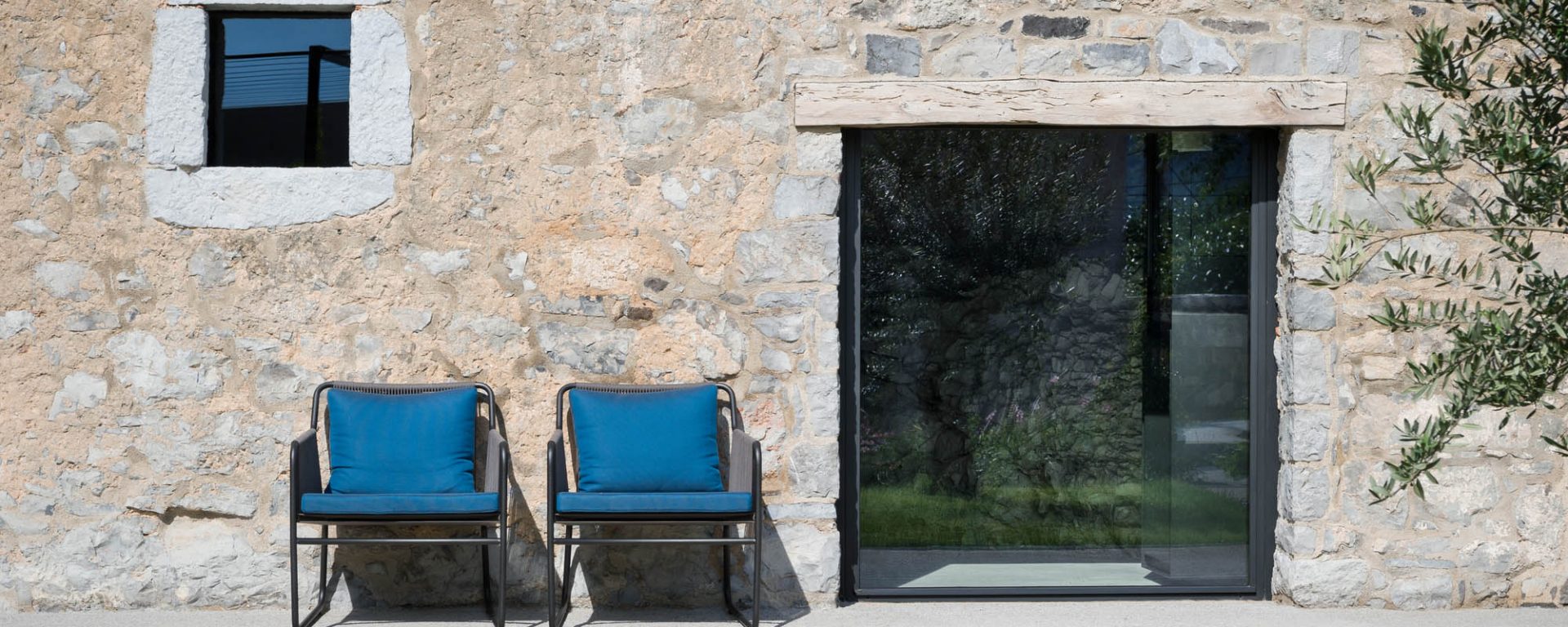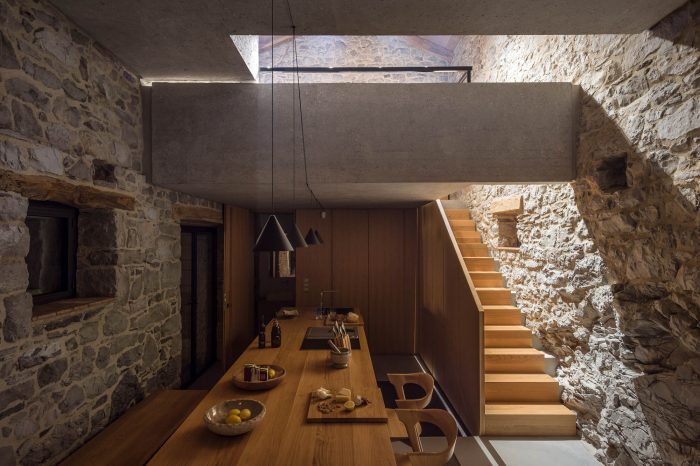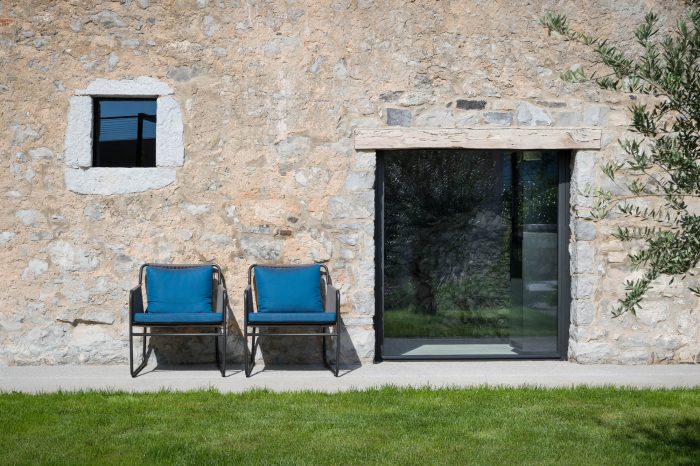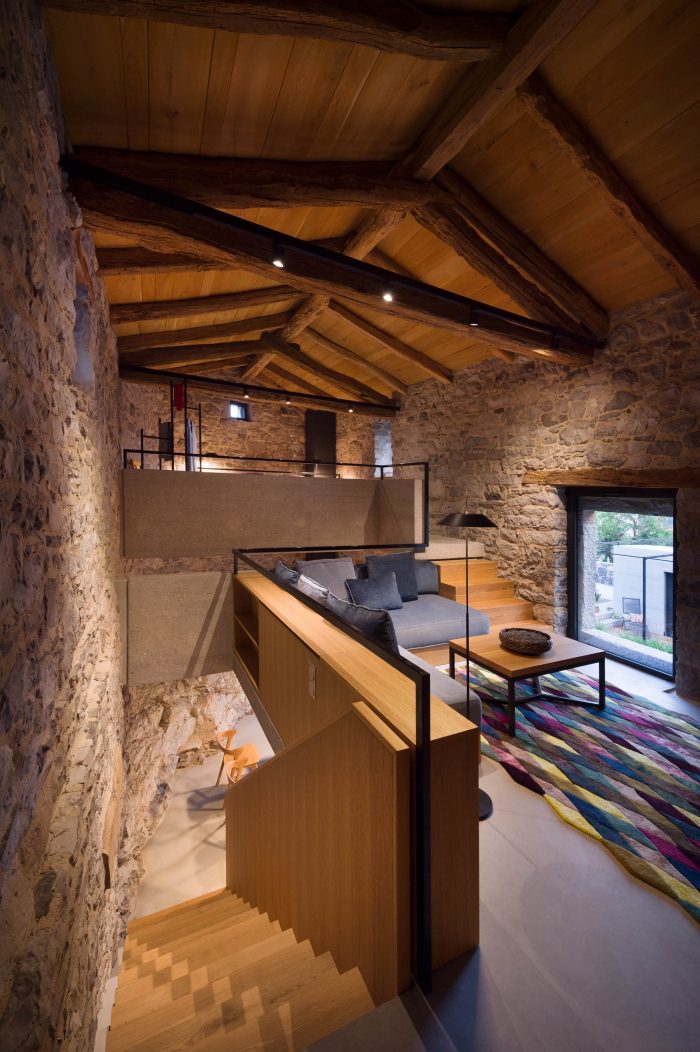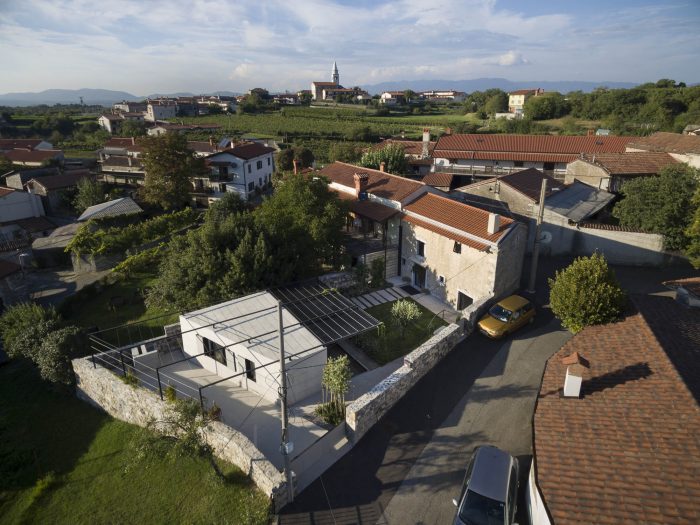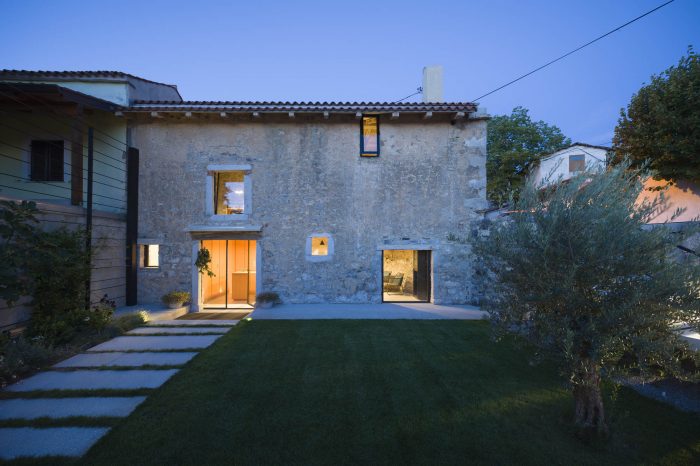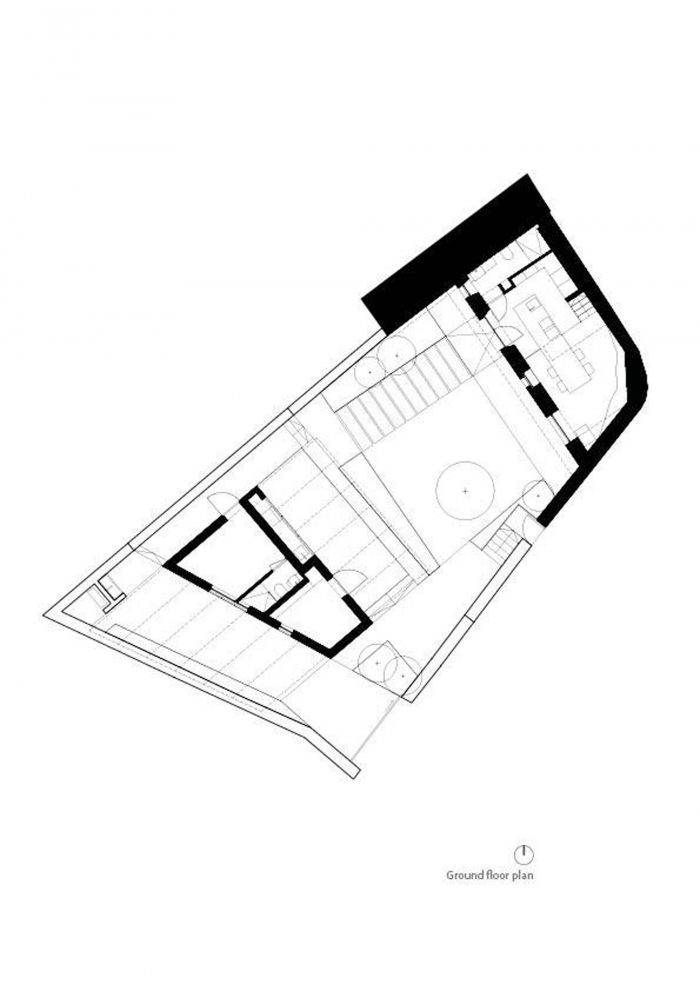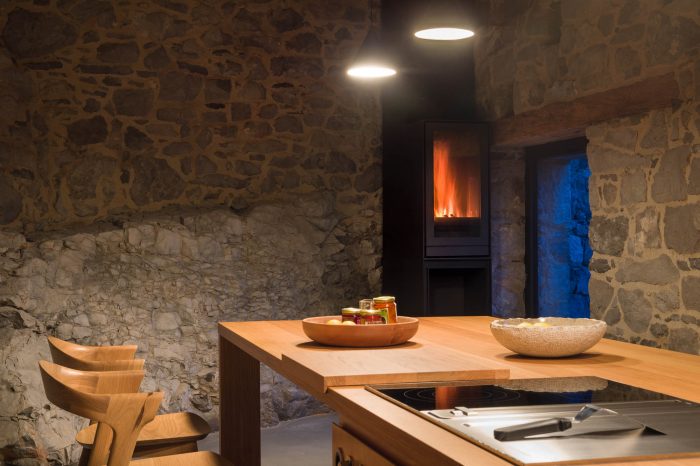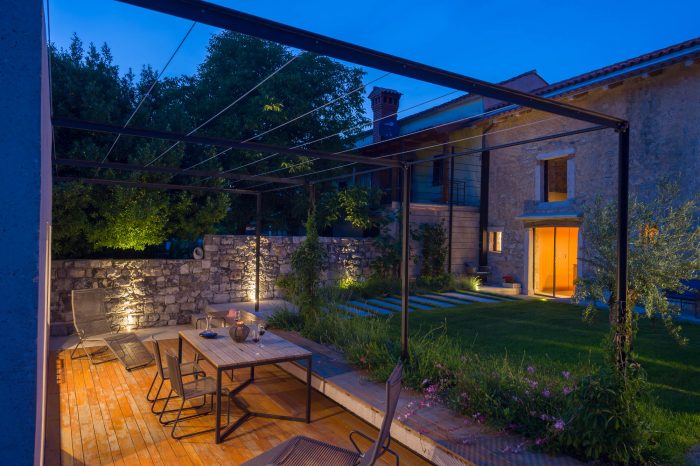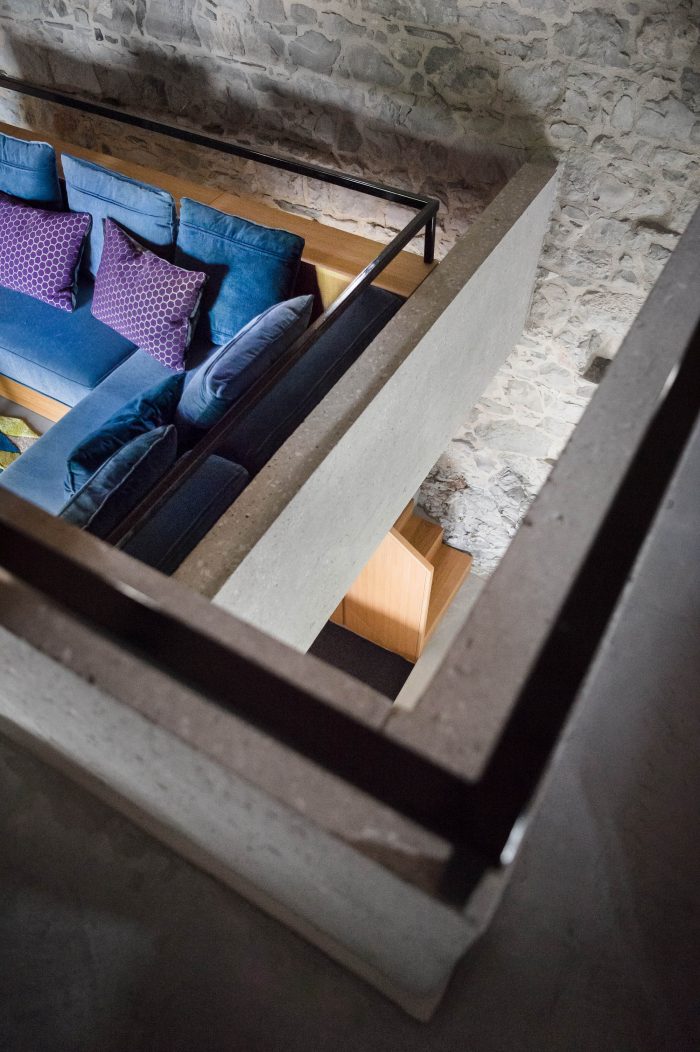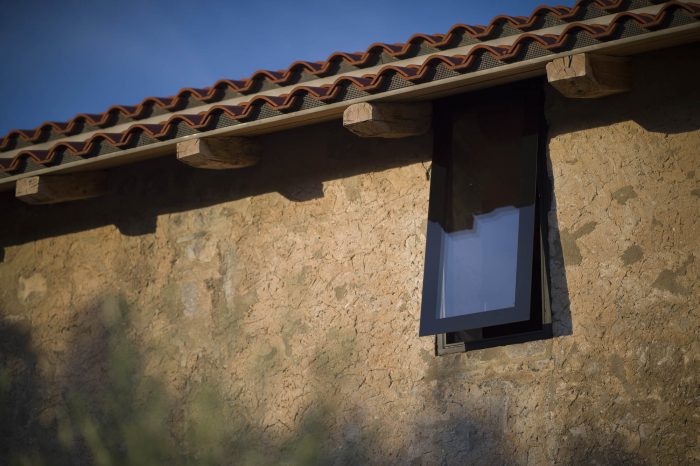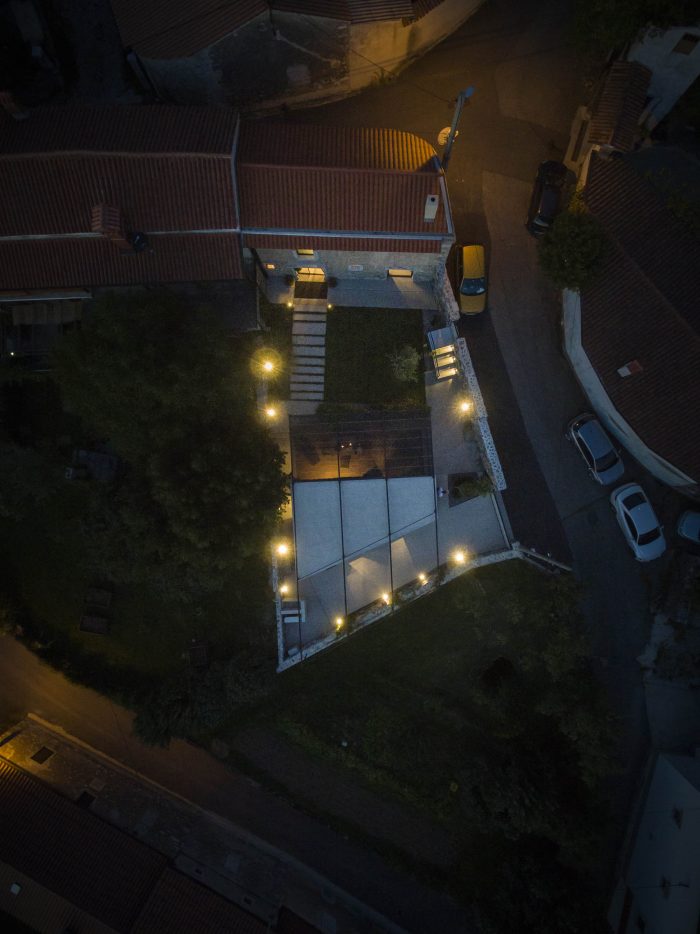该项目位于斯洛文尼亚的喀斯特地区,那里的气候是地中海式的,地貌是岩石和干燥的,只被一望无际的葡萄树和松树林覆盖。
The project is located in the Karst region of Slovenia, where the climate is Mediterranean and the landscape rocky and dry, covered only by endless stretches of vine and pine tree forests.
废弃的旧谷仓矗立在一个小村庄的中心,其墙壁沿着房屋群之间的狭窄道路弯曲。它似乎是从岩石中长出来的,面向西南的一个封闭的花园和的里雅斯特市上空的山丘。
The old abandoned barn stands in the centre of a small village, its walls curving along the narrow road between the cluster of houses. It appears to have grown out of a rock, facing South-West onto an enclosed garden and over the hills above the city of Trieste.
这座房子的整修是经过深思熟虑的,尽量保留了原有的元素;石制的门窗框、橡木屋顶结构、冲刷过的外墙涂料和所有的铁制品都显示出它曾经是一头名叫Sivka(薰衣草)的牛的家。我们也给这个地方起了个名字:坎布拉,这是当地的方言,指的是传统喀斯特房屋底层的一个多功能房间。
The refurbishment of the house was approached with thoughtfulness and care, trying to keep as many of the original elements as possible; the stone window and door frames, the oak roof structure, the washed-out facade render and all the ironmongery additions revealing that it was once a home to a cow called Sivka (Lavender). We gave the place a name as well; Kambra, which is the local vernacular word for a multi/purpose room in the ground floor of the traditional Karst house.
在花园里,一个新建的单层建筑被放置在那里,以支持坎布拉的现代功能,即一个舒适的度假胜地。面对房子,它定义了一个受保护的院子的边界,是对当地类型的重新诠释;是每个家庭的核心。
In the garden a new-built single storey building is placed to support Kambra’s contemporary function of a cosy holiday retreat. Facing the house it defines the boundaries of a protected courtyard, a re-interpretation of a local typology; the heart of every homestead.
整个项目中使用的主要材料是基本的和持久的;混凝土基座,由黑铁细节组成的框架和补充,在触感非常重要的地方由天然橡木表面软化。
The main materials used throughout the project are elemental and enduring; the concrete base, framed and complemented by black iron detailing is softened by natural oak surfaces wherever tactility is of main importance.
新材料的坚固性和新旧材料之间的衔接处理,暗示了房子所承受的时间的流逝,庆祝它的痕迹和伤痕。老房子内部使用的混凝土加强了石头的强度。在外面,新建成的结构,浇筑在暴露的混凝土中,与它相似。
The solidity of the new materials and the treatment of junctions between the old and the new alludes to the passing of time that the house has withstood, celebrating its marks and scars. The concrete used on the inside of the old house strengthens the stone. Outside, the new built structure, cast in exposed concrete, resembles it.
这座房子在过去400年的过程中慢慢地发生了变化和风化,它的持续转变成为其翻新的灵感来源。这座混凝土建筑最终会被生命形式所淹没,并被雨水冲刷出痕迹。这样一来,它就会像一块石头一样,成为它目前以其统一性和鲜明的形式所面对的景观的一部分。变化的过程将继续成为它的建筑师。
The house slowly changed and weathered through the course of its past 400 years and its continued transformation has served as an inspiration for its renovation. The concrete building will be eventually overgrown with life forms and marked by rainfall. With that it will, like a rock, become a part of the landscape that it currently confronts with its uniformity and sharp form. The process of change will continue to be its architect.
Architects: Lucija Penko, Medprostor d.o.o.
Year: 2018
Photographs: Janez Marolt
Manufacturers: Vibia, BORA, Flos, Jansen, Nestor Martin
Lead Architects: Lucija Penko MArch ARB, Rok Žnidaršič u.d.i.a. from Medprostor d.o.o.
Structure:Franc Pezdirc s.p.
Electrical:Elektro Komunikacije Janez Mežnar s.p.
Mechanical:Instalacije Aleš Abram s.p.
Landcaping:Matevž Kopitar
Main Contractor:Štolfa, gradbeno podjetje d.o.o.
Ironmongery:Ključavničarstvo Marjan Golob s.p.
Joinery:Piskar Henrik s.p.
Country:Slovenia

